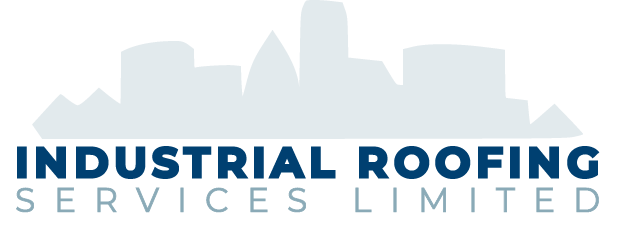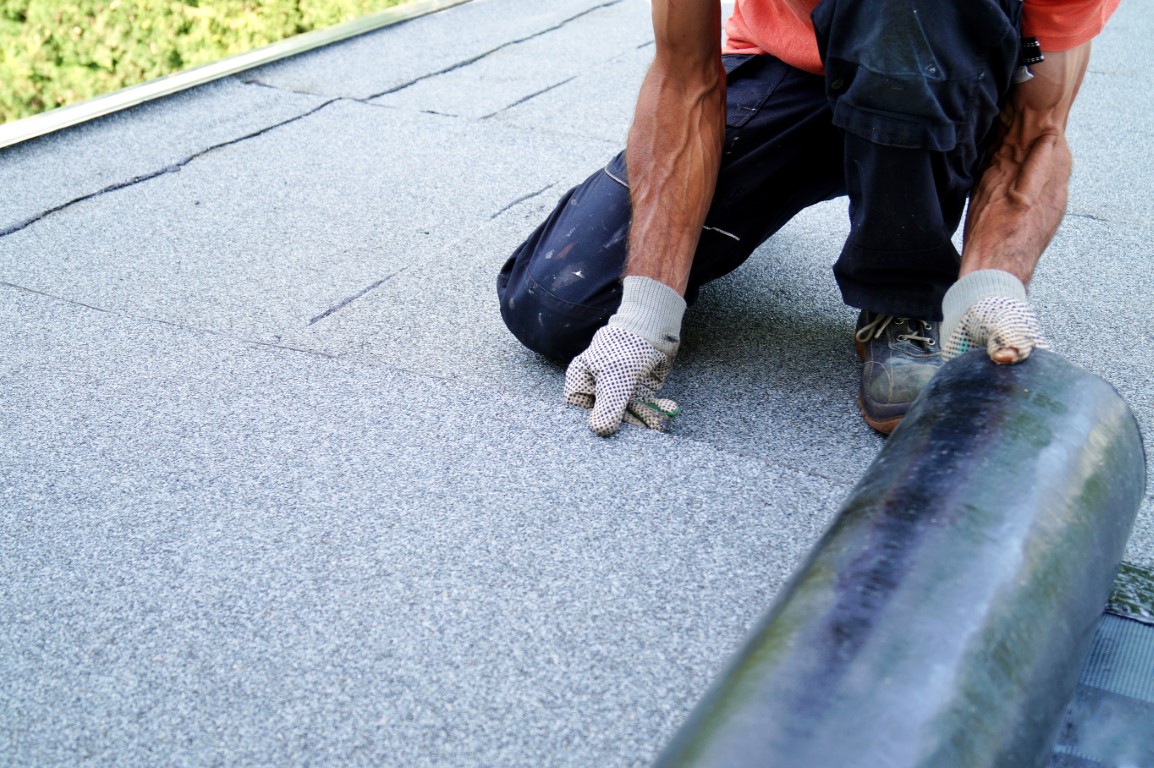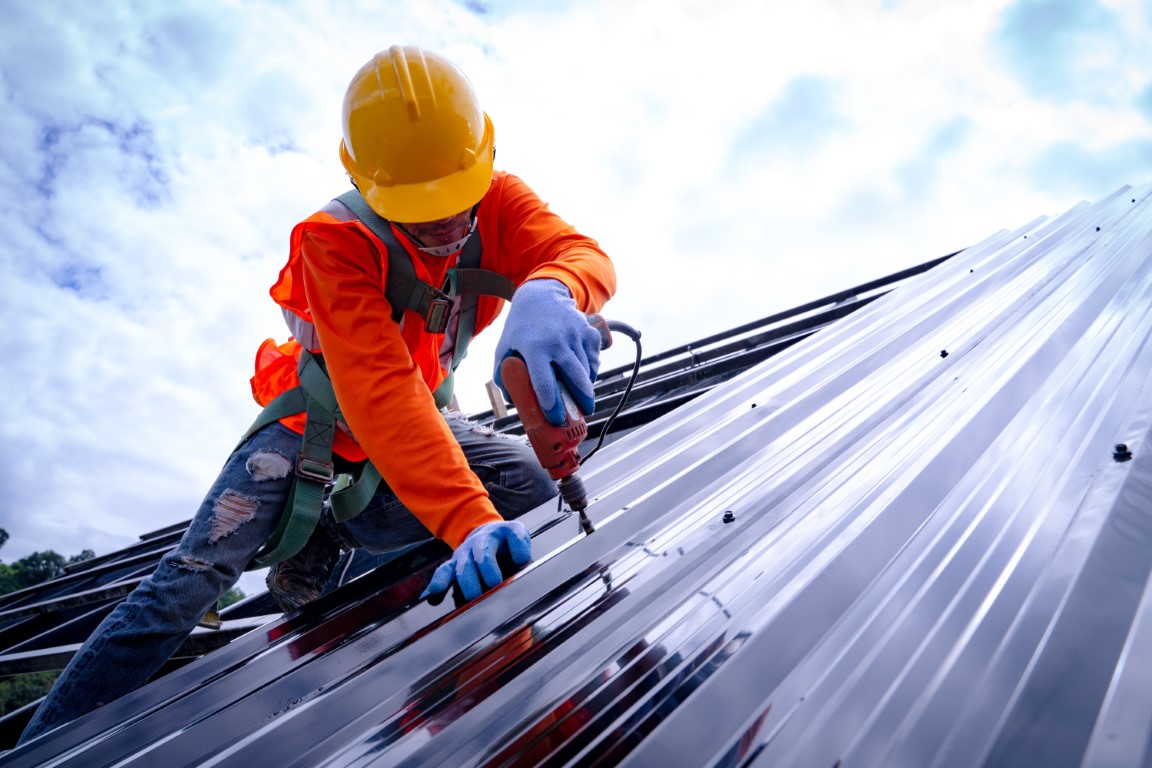Commercial flat roofs are built to last, but even the best systems will eventually show signs of wear. Leaks, ponding water, surface cracks, or rising energy costs are all red flags that your roofing system might be nearing the end of its service life. The question many property owners ask at this point is: Should we restore or replace the roof?
At Industrial Roofing Services Limited, we’ve been advising Southern Ontario’s building managers and property owners for over 45 years. We’ve seen nearly every type of roof failure and repair scenario possible, and we know that a full replacement isn’t always the best – or most cost-effective – solution. In many cases, a professional restoration can safely extend the life of your flat roof and delay replacement by a decade or more.
In this blog, our experts break down everything you need to know about restoration vs. replacement, including when each is recommended, and what to expect during either process.
Table Of Contents:
What Is Roof Restoration?
Pros & Cons
When Is Roof Restoration Recommended?
When Is Roof Restoration NOT Recommended?
What Is Roof Replacement?
Pros & Cons
When Is Roof Replacement Recommended?
When Is Roof Replacement NOT Recommended?
Restoration Vs Replacement: Side-By-Side Comparison
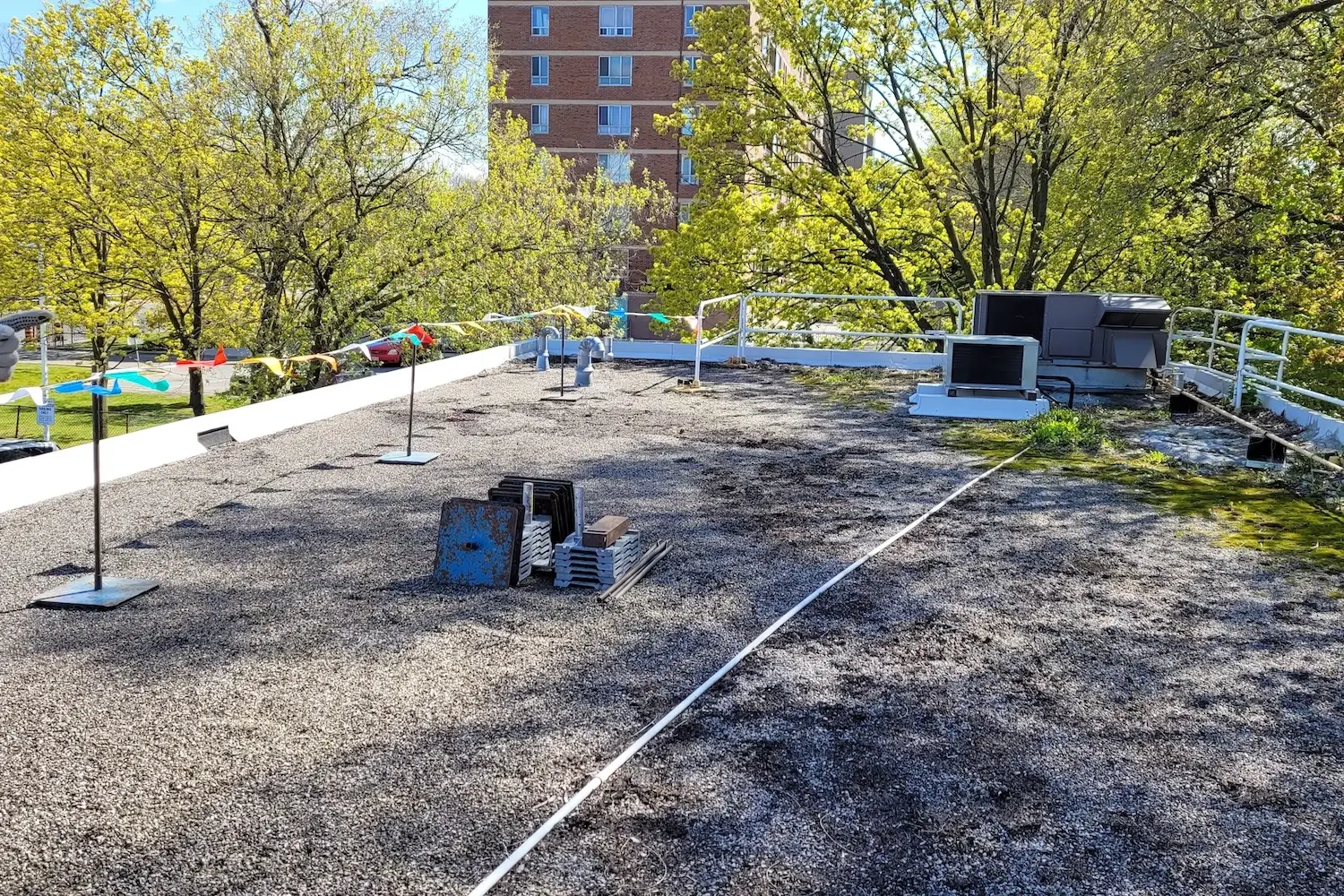
What Is Roof Restoration?
Roof restoration is a way to revive an aging flat roof without having to tear everything off and start from scratch. Instead of a full replacement, restoration focuses on fixing problem areas, reinforcing weak spots, and applying a protective coating that seals the surface and helps the roof perform like new again.
As long as the existing roof is still structurally sound, with no major rot, trapped moisture, or widespread damage, restoration allows you to keep the original materials in place. That means less mess, less downtime for your building, and in many cases, a much lower cost. It’s a practical solution for commercial properties where the roof is starting to show signs of wear but still has some life left in it.
A typical commercial roof restoration service includes:
- Detailed condition assessment and core sampling
- Infrared moisture scanning to identify saturated insulation or hidden leaks
- Repairs to seams, penetrations, cracks, flashing, and blisters
- Thorough cleaning and surface preparation, such as power washing or priming
- Application of a fluid-applied elastomeric coating, usually silicone, acrylic, or polyurethane, designed to create a seamless, UV-resistant, waterproof layer
- Final sealing of all transitions, rooftop units, parapets, and drains
The result is a reinforced roofing system that resists weathering, reflects solar heat, and enhances water management, all while extending the roof’s lifespan by 10-15 years or more.
Roof restoration can be performed over a wide range of commercial flat roofing types, including:
- EPDM (rubber)
- TPO and PVC (thermoplastic membranes)
- Modified Bitumen (Mod Bit)
- Built-Up Roofing (BUR) systems, depending on their condition
It’s important to note that restoration is not a “quick patch.” When done properly by certified professionals, it is a code-compliant, warranty-eligible system upgrade that meets all provincial building and fire safety standards. In many cases, it can also qualify as a capital improvement under commercial building depreciation schedules.
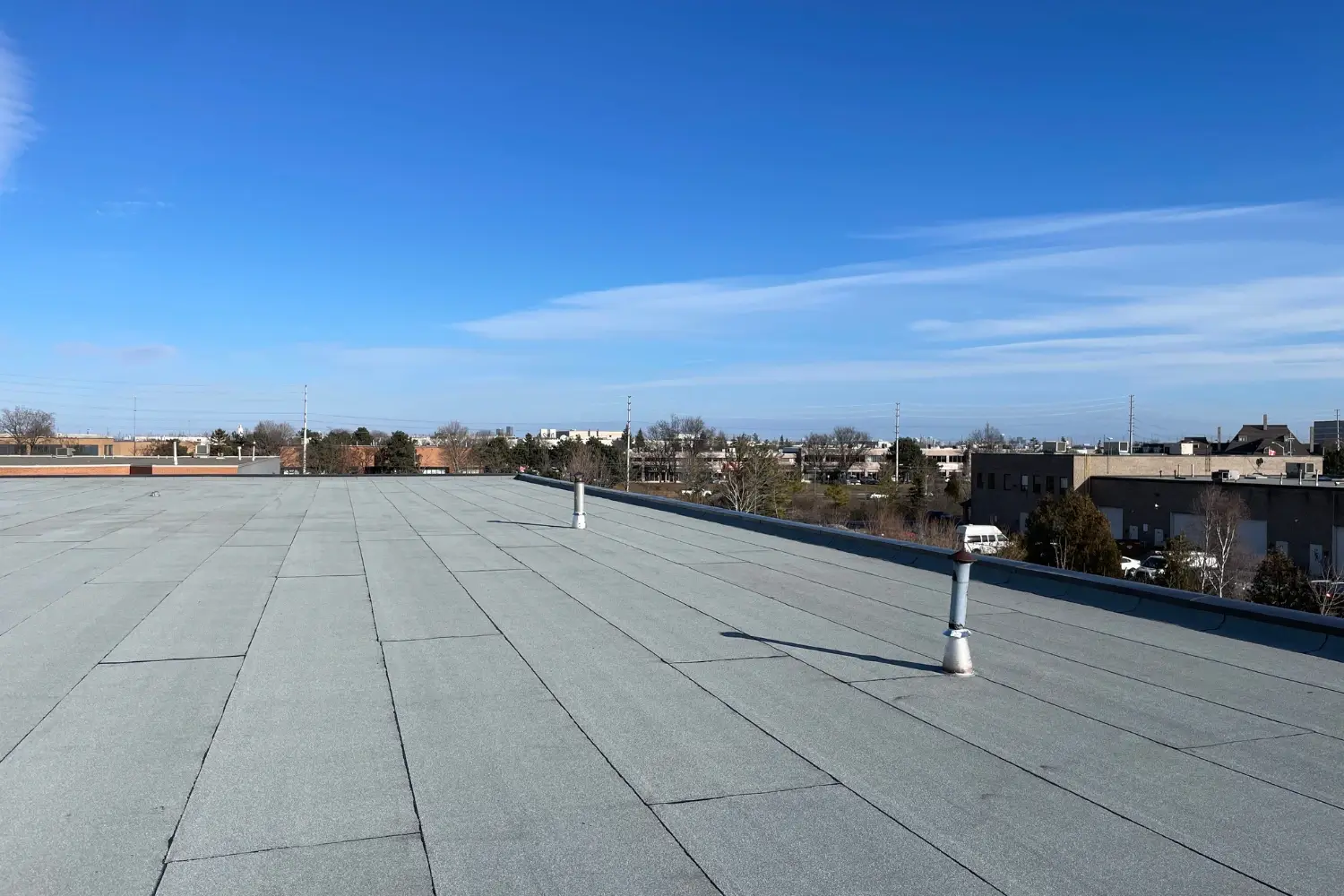
Pros of Roof Restoration
1. Cost Savings
Restoration can cost 50–70% less than a full replacement. It also avoids costly removal and disposal fees.
2. Extended Lifespan
A professionally restored roof can last 10–15 more years, often with a new warranty of 10+ years when installed by certified applicators (which we are).
3. Energy Efficiency
Reflective coatings reduce heat absorption and can lower your cooling bills by up to 30% in the summer months.
4. Sustainability
By reusing the existing roofing structure, restoration helps divert tons of material from landfills, an important consideration for environmentally conscious building owners.
5. Minimal Disruption
No tear-off means your tenants, staff, or building operations can continue with little interruption.
Cons of Roof Restoration
1. Not Always Viable
Restoration only works if the existing roof system is still structurally sound. If water has infiltrated insulation layers or the deck is damaged, restoration may not be safe or effective.
2. Limited by Roof Type
Not all roofing systems are ideal candidates. Some older BUR systems or roofs with extensive patchwork may not bond properly with coatings.
3. Maintenance Still Required
Restored roofs still need regular inspections and flat roof maintenance services. Coatings can degrade over time from UV or pooling water if not managed.

When Is Roof Restoration Recommended?
We generally recommend restoration when:
- The roof is under 20 years old
- Less than 25% of the surface is damaged
- No significant water saturation has reached the insulation or deck
- You’re working with a TPO, EPDM, PVC, Mod Bit, or BUR roofing system in fair condition
- You need a quick, budget-conscious fix that extends lifespan and improves energy efficiency
Case Example:
A logistics warehouse in Mississauga had a 15-year-old EPDM roof with minor seam separation and one leak near a rooftop HVAC unit. Infrared scans confirmed the insulation was dry. We cleaned and sealed the membrane and applied a silicone coating. The building avoided a full replacement and gained a 12-year material and labour warranty.
When Is Roof Restoration NOT Recommended?
Restoration may NOT be a good option if:
- The membrane is badly torn, punctured, or degraded
- There are soft spots or structural issues in the roof deck
- There is significant ponding water that can’t be addressed
- Multiple previous patch jobs have compromised roof integrity
- You’re planning major rooftop upgrades (e.g., solar panel installation) in the near future
We use infrared moisture scanning to help confirm whether restoration is possible or if underlying damage is too extensive.
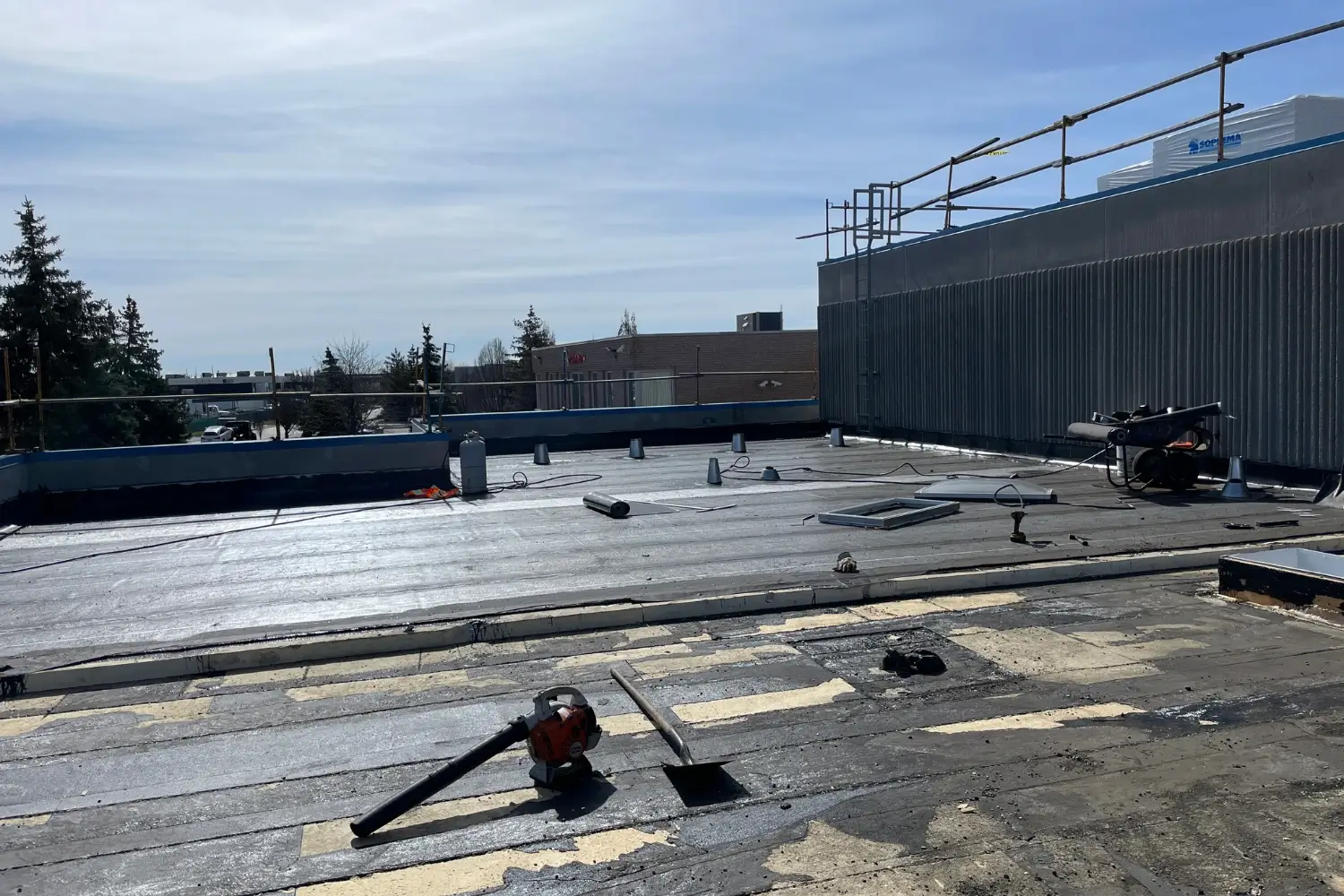
What Is Roof Replacement?
Roof replacement is a complete overhaul of your existing roofing system. It means stripping away everything down to the structural deck, membrane, insulation, flashing, and sometimes even the vapor barrier, and starting fresh with new, high-performance materials. This type of project is typically necessary when a roof has reached the end of its serviceable life, has suffered serious damage, or is no longer functioning as it should due to trapped moisture, sagging, or persistent leaks.
Because it’s such a large-scale undertaking, roof replacement is often viewed as a capital improvement to the property. Done correctly, it adds decades of protection, improves energy efficiency, and brings the building up to modern building codes and safety standards.
Commercial flat roofing systems we install include:
- EPDM (Ethylene Propylene Diene Monomer): Ideal for flexibility and cold weather performance
- TPO (Thermoplastic Polyolefin): A reflective, energy-efficient single-ply system
- PVC (Polyvinyl Chloride): Resistant to chemicals and great for restaurants or factories
- Modified Bitumen (Mod Bit): Durable multi-ply asphalt system with granule surfacing
- Built-Up Roofing (BUR): Multiple layers of asphalt and felt with a gravel or cap sheet finish
We only install manufacturer-backed systems from certified brands like Elevate™, Soprema, Carlisle, GAF, and Tremco.
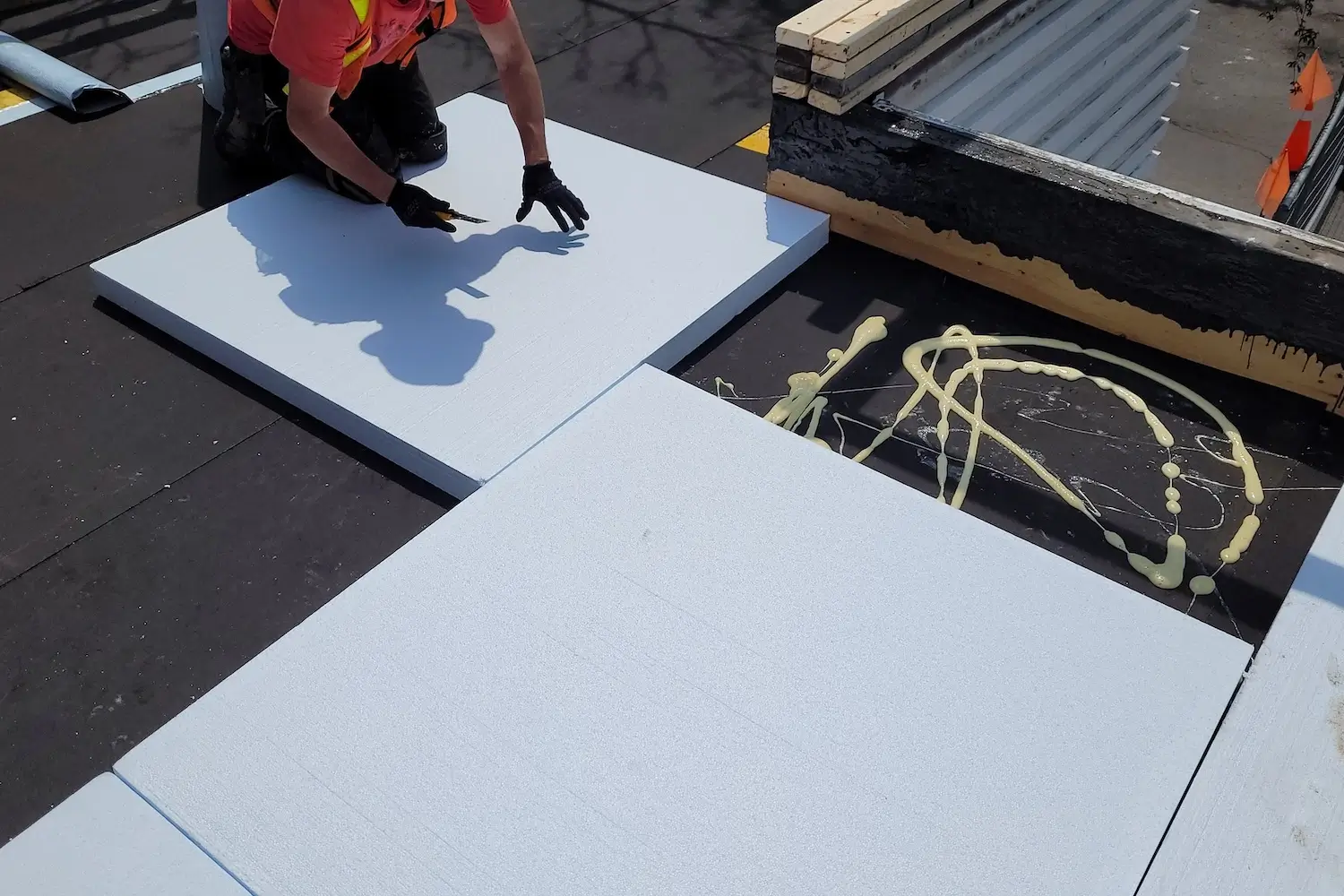
Pros of Roof Replacement
1. Long-Term Solution
A new commercial roof can last 20–30 years, depending on the system selected.
2. Full Structural Reset
Replacement allows you to address deck repairs, insulation upgrades, and add slope to prevent ponding.
3. Warranty Benefits
New systems typically come with 15–30-year warranties and are fully code-compliant.
4. Technology Upgrades
It’s the right time to integrate new features like rooftop fall protection systems, better drainage, or skylight replacements.
Cons of Roof Replacement
1. Higher Cost
Full replacements can cost 2–3 times more than restoration due to material, labour, tear-off, and disposal.
2. Longer Timelines
Depending on the building size, weather, and permitting, it can take several weeks to complete.
3. Operational Disruption
Noise, odours, or rooftop access can interrupt building activities, especially in retail or institutional environments.
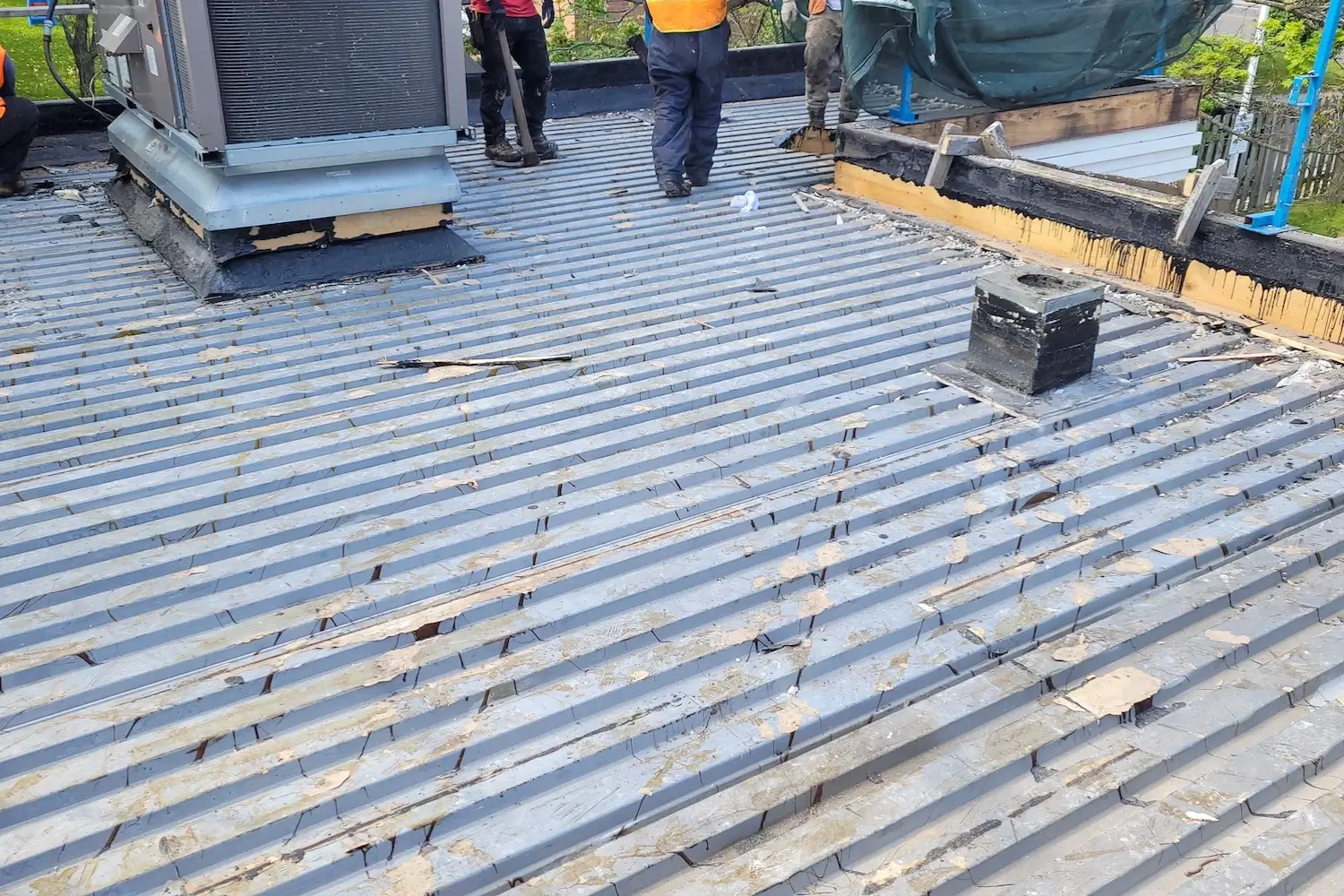
When Is Roof Replacement Recommended?
We recommend full replacement when:
- The roof is over 20–25 years old
- There are multiple leaks or soggy insulation
- You’ve had frequent repairs in recent years
- You want to switch roofing systems (e.g., from BUR to TPO)
- You’re planning a building retrofit or change in use
Case Example:
A commercial plaza in Hamilton had a 28-year-old BUR roof with multiple failed patch repairs. Moisture scans showed soaked insulation across 40% of the area. We performed a full tear-off and installed a GAF EverGuard® TPO system with new ISO insulation, improving both thermal performance and leak protection.
When Is Roof Replacement NOT Recommended?
Avoid full replacement if:
- The current roof is still structurally sound and performing adequately
- Budget constraints make it unfeasible
- Restoration offers a viable alternative with proper inspection
Choosing between restoration and replacement is never a one-size-fits-all decision. The right solution depends on your roof’s age, condition, materials, building use, and budget.
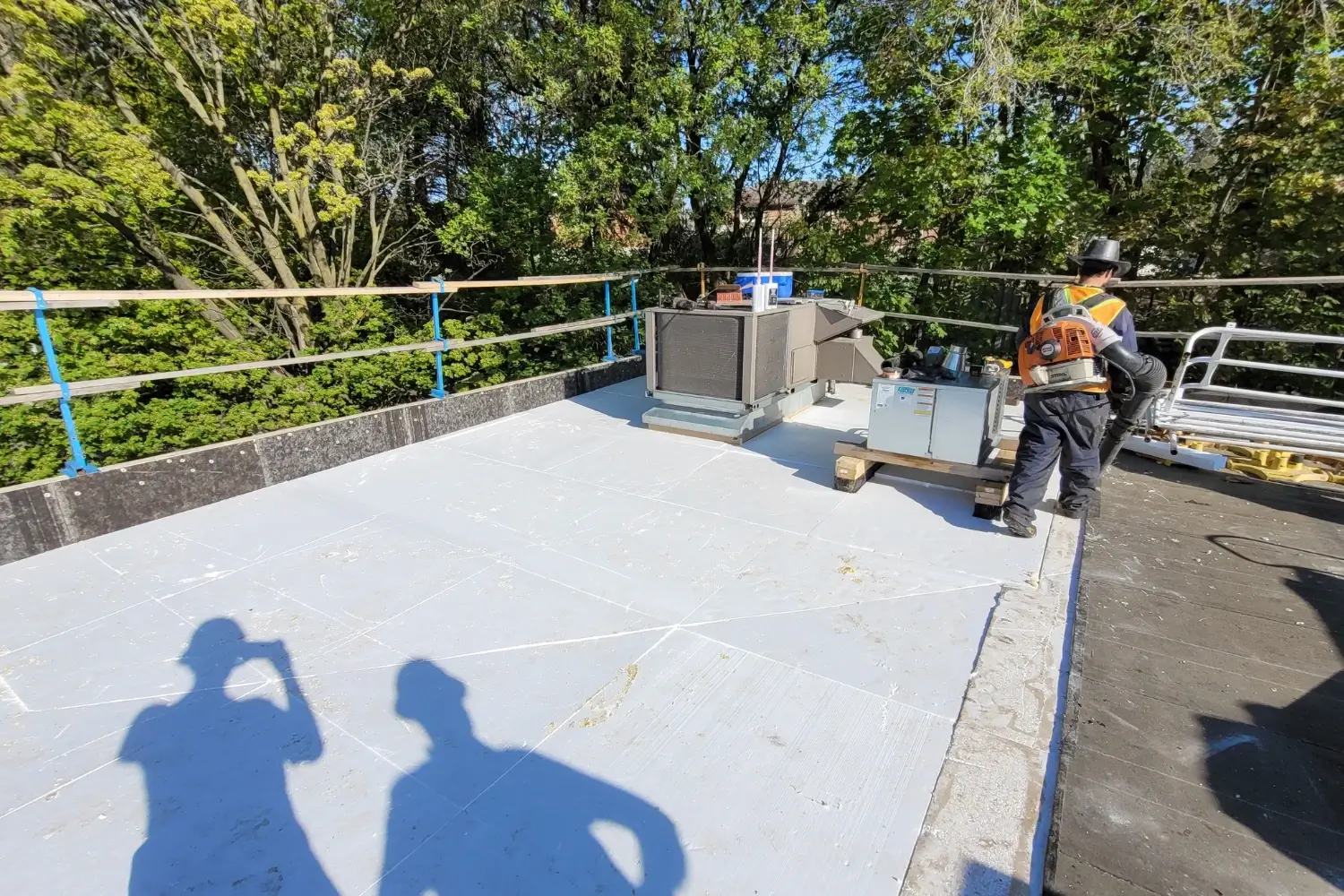
Restoration Vs Replacement: Side-By-Side Comparison
| Feature | Roof Restoration | Roof Replacement |
|---|---|---|
| Scope of Work | Repairs, reinforcements, and protective coatings over existing membrane | Complete removal of old system and installation of a new one |
| Cost | 50-70% less | Higher initial investment |
| Project Duration | Faster (typically 2–5 days) | Longer (can take 1–2 weeks or more) |
| Disruption | Minimal disruption to building operations | More disruptive due to full tear-off |
| Expected Lifespan Gained | Up to 10–15 additional years | 20–50+ years with a new system |
| Best Used When | Roof is <20 years old and structurally sound | Roof has major damage, moisture issues, or reached end-of-life |
| Environmental Impact | Less waste, retains existing insulation | More waste, full system disposal required |
| Warranties Available | 10–15 years with coating manufacturers | Full manufacturer warranties (up to 30 years) |
| Inspection Required | Yes – moisture scan & full condition report | Yes – full site assessment and custom design plan |
Industrial Roofing Services Limited is here to help with:
- Free commercial roof inspections
- Infrared moisture scans
- Expert guidance on your repair options
- Certified applications of all major flat roofing systems
Whether you’re managing a single facility or multiple properties across Southern Ontario, we’ll help you protect your investment with the right service at the right time.
Call us at (905) 760-0735 to schedule a free, no-obligation inspection
Serving Toronto and all of Southern Ontario
45+ years of experience | OIRCA member | Certified installers
